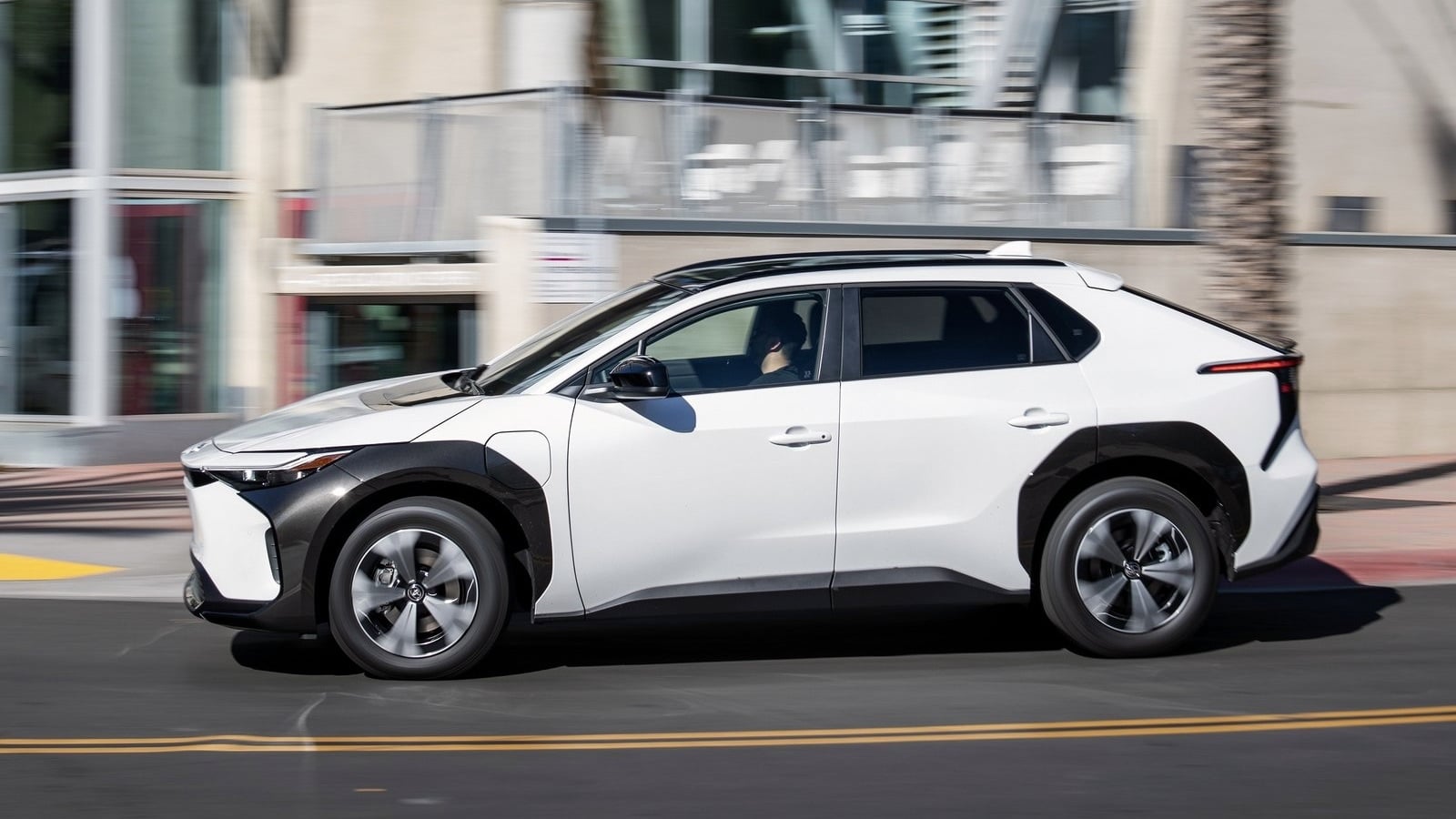In recent days, the automotive press has been inflamed over an apparent defect with the Toyota bZ4X 4 wheel drive. This would be a problem with charging the battery in cold weather. Toyota did not go through four paths to announce it. It confirms on its media site that the charging speed of its first electric vehicle could be radically reduced, even impossible, under certain conditions. Let’s take stock of the situation.
Toyota posted this information in a “five things to know” section about the bZ4X through its media site in the United States. At the bottom of the article, in the exceptions section, we could clearly read the following statement (translated from English):
Direct current (DC) charging times are estimated based on ideal charging conditions. When temperatures drop below 10 degrees Celsius (50 degrees Fahrenheit), charging time increases dramatically. For the bZ4X AWD model, charging may slow down more than other models in weather conditions below zero degrees Celsius (32 degrees Fahrenheit) and may not be possible when the temperature drops to approximately -20 degrees Celsius (-4 degrees Fahrenheit ) and less. Traction battery condition, charger specifications, and fully DC charging the battery more than twice a day can also adversely affect charging time.

A warning to take seriously
In other words, what Toyota is telling us is that it would be possible that, during a usual cold in Quebec, the bZ4X would be unable to refuel at a fast terminal.
Obviously, the fact that the bZ4X is still very new and introduced to the market this spring makes it impossible for us to recharge in cold weather. We will have to wait until next winter to find out for sure.
However, the American media MotorTrend claims to have noticed a significant drop in charging speed in a fast charger at a temperature of 60 degrees Fahrenheit, or 15.5 degrees Celsius. Although Toyota advertises a charging power of 100 kilowatts, journalists from MotorTrend barely recorded 62 kilowatts of power, and only for a very short time. Throughout the recharge cycle, the power decreased significantly.
It is important to specify that such a phenomenon occurs for all electric vehicles. It is very rare for a model to reach its advertised charging speed, especially when the mercury drops, as is often the case in Quebec. So it is a normal phenomenon.

A known defect on the two-engine bZ4X?
The bZ4X problem doesn’t seem to be normal though. Although Toyota has yet to admit it’s a design flaw with the dual-motor model’s battery, it’s still interesting that it’s the only model in the lineup to be affected. Remember that it uses a different battery than its two-wheel drive equivalent, whose capacity is rated at 71.4 kilowatt hours instead of 72.8.
So that’s why this flaw doesn’t extend to its mechanical twin, the Subaru Solterra. Remember that this model, although also equipped with 4-wheel drive, receives the battery whose capacity is calculated at 71.4 kilowatt hours. Curiously, this battery can support a more powerful charging power of 150 kilowatts.
OneCarSpot’s review
Toyota is understandable for wanting to warn consumers about the charging speed of the two-motor bZ4X in cold weather, because it’s true that charging speed will be reduced when the mercury drops below freezing. This is the reality of all electric vehicles.
But to warn that this “may not be possible when the temperature drops to around -20 degrees Celsius” intrigues us.
In my career as an automotive journalist, I have had the chance to test a variety of electric vehicles in various winter contexts. I even drove to Manic 5, during freezing cold, in a Kia Niro EV. Admittedly, I have always observed fluctuations in the speed of recharging in a fast terminal, but in no case was it impossible to refuel the vehicle. Even at a felt of -48 degrees Celsius.
We are therefore awaiting an official response from Toyota Canada on the subject. Is it really a defect related to the battery of the 4WD bZ4X, or is Toyota simply taking extra precautions to properly inform consumers?
Through other media that have covered the case, Toyota seems to say that the information on its media site has been misinterpreted and has been updated. But as of this writing, the automaker is still writing in black and white that a two-engine bZ4X might not be able to refuel in cold weather. Curious to know more, we continue to follow this file closely. We will get back to you with more details.












